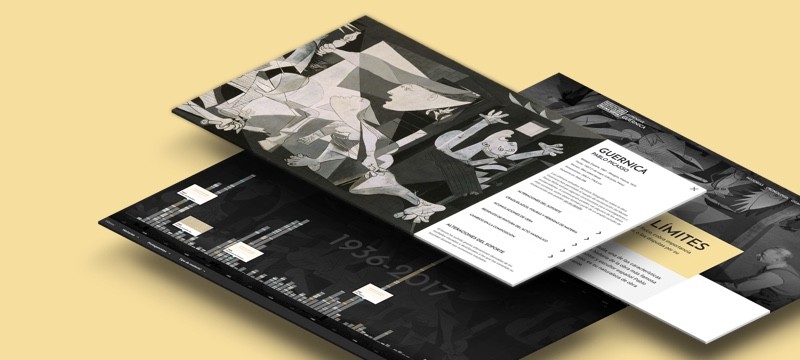About Rethinking Guernica
Rethinking Guernica stems from a research project which compiles and presents materials related to the painting Pablo Picasso produced for the Spanish Pavilion at the Paris World’s Fair of 1937 and which is currently conserved in the Museo Reina Sofía.
This initiative, made possible through the joint work of different departments in the Museo, is an open tool of knowledge, progressively enriched with new documents and setting out from the artistic and symbolic values in Picasso’s painting to analyse contemporary history and the processes which build its imagery.
Rethinking Guernica is envisaged as an archive of archives, comprising different public and private archives from institutions and Spanish and international agencies and tracing an approach to the history of the mural by acknowledging its quality as an artwork and icon which transcends its own materiality to become a constantly updated image and symbol. Moreover, the plural nature and provenance of the materials brought together leads to an understanding of the contexts surrounding Guernica — direct or indirect, physical or symbolic — and the multiple historical circumstances it has contributed to, and continues to do so, or in which it has been involved.
In terms of the archive, the materials are organised as a non-hierarchical constellation of narratives contained in different documents, which engender a wide array of possibilities for accessing information. Equally, each document has been allocated a series of labels – chronological, geographical or contextual, in reference to exhibitions, authors, or other aspects — not only linking it to the organisational accounts and criteria put forward, but also prompting new searches from the actual documents.
Rethinking Guernica takes centre stage in the gigapixel study of Guernica. The latest technology applied to the knowledge, analysis and conservation of art heritage enables this study to group together and manage the vast number of images taken on the painting – the pictorial surface, the back, the stretcher — through a robotic system with different sensors. The front and back of the picture have been scanned using different light frequencies (visible light, ultraviolet light, infrared light, x-ray imaging) which, along with the tool for 3D recreation, have produced an accurate picture of the painting’s condition. Moreover, the mapping of alterations has located abrasions, craquelure, wax, cracks, marks, retouching, underlying brushstrokes and other identified components, and, in addition to disclosing information on the picture’s state of conservation, the interpretation of these gigapixel images is also integral to a more profound approach to Picasso’s working process and technique.
Museo Nacional Centro de Arte Reina Sofía
Santa Isabel, 52
28012 Madrid
Tel. (+34) 91 774 1000
Fax. (+34) 91 774 1056
Information: derechos.autor@museoreinasofia.es
